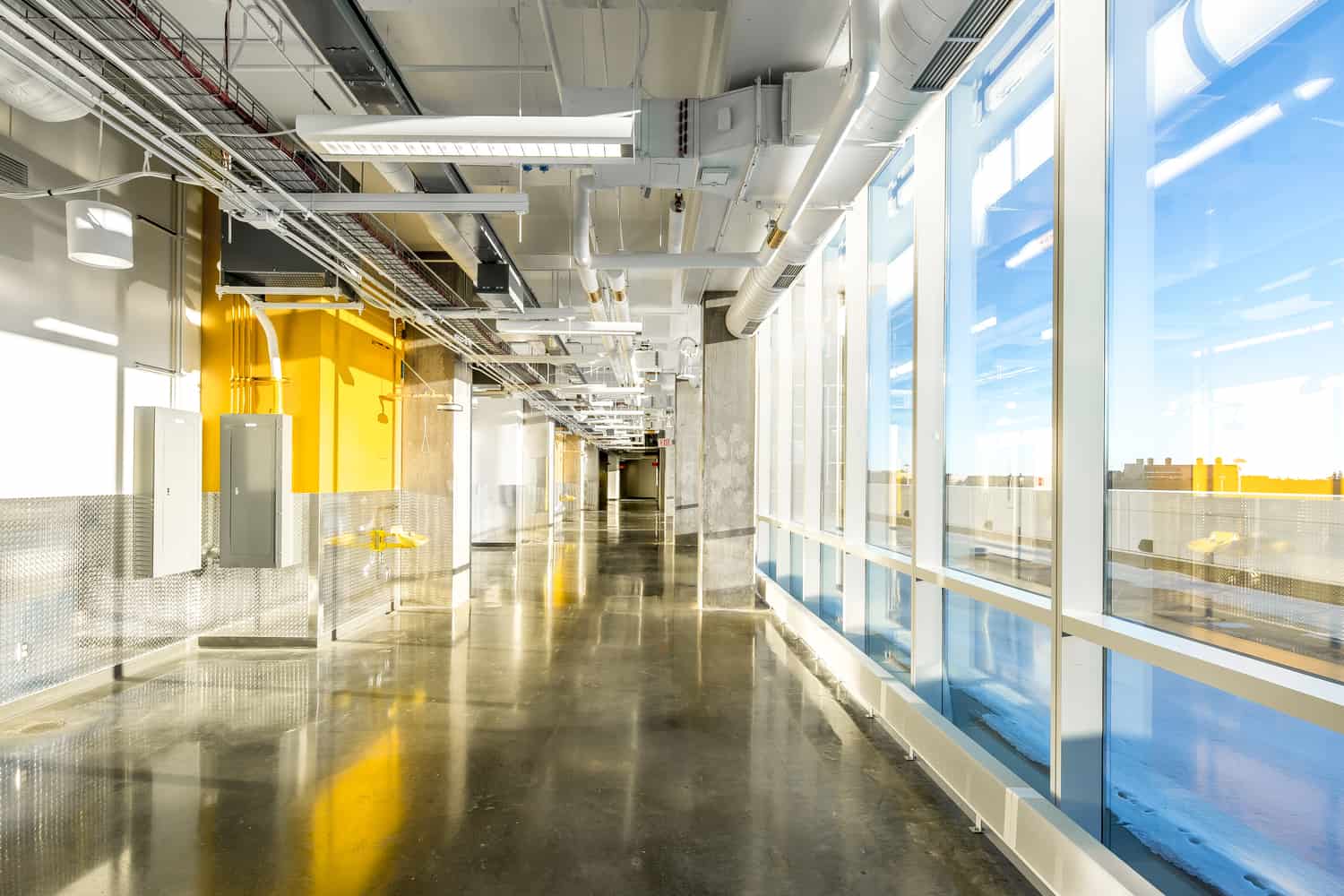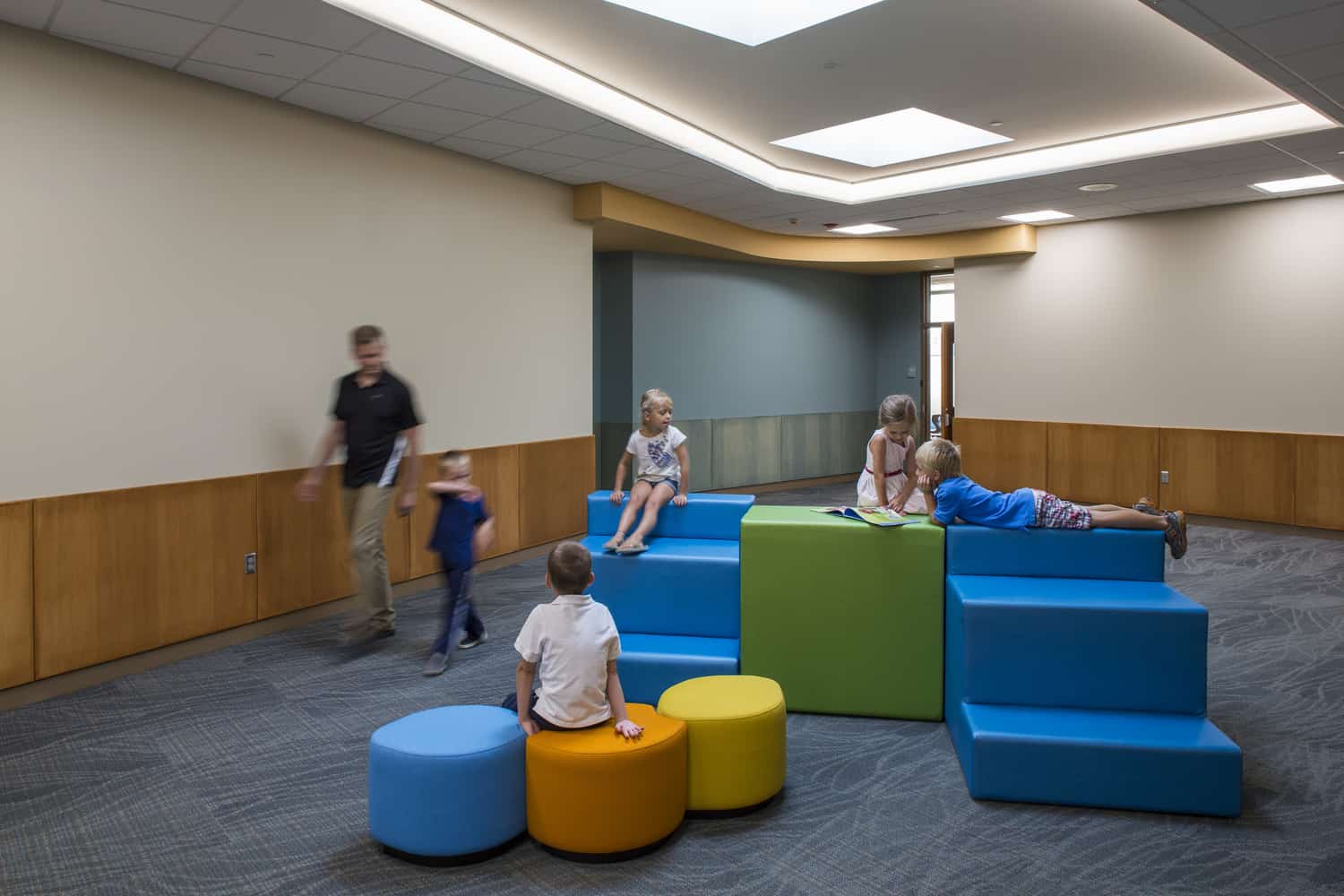A 466,000-square-foot, state-of-the-art research and development center that opened in spring recently was certified LEED® Silver by the U.S. Green Building Council® for its operational efficiency and environmental aspects. Surpassing the client’s original goal of LEED Certified, the facility is the largest designed by BWBR to receive a LEED designation.
Housing more than 700 researchers and scientists and adaptable laboratories and R&D support spaces for their work, the facility features one of the largest storm water management systems in Minnesota, along with plumbing fixtures designed to reduce water use by 30 percent, and landscaping and irrigation systems designed to reduce water use by 54 percent.
Among other strategies, the use of heat recovery systems, variable air volume fume hoods, and cascading air from offices to high-intensity labs are modeled to reduce energy costs by 28 percent compared to established code baseline for laboratories and produce 37 percent in energy use savings.
Additional strategies used to earn the research center’s LEED Silver status:
- Green cleaning and equipment policies;
- Solid waste management policy and tracking;
- Low-emitting materials;
- Maximizing construction waste recycling;
- Active design elements, including accessible staircase, workout facilities, and showers; and,
- Sited near public transit and community resources.
“LEED certification for a facility of this size and technical complexity is a significant milestone for our region,” said Stephanie McDaniel, AIA, LEED AP, a principal and lab planner at BWBR. “Research and development facilities are energy intensive, but by setting the priorities early and working with engineers on innovative strategies, we can design these large centers to benefit the people working there and the communities surrounding these buildings.”
With more than 40 LEED accredited professionals working at BWBR, the firm is one of the leading advocates for sustainable performance design, incorporating green design strategies into technically complex facilities like R&D centers, hospitals, and academic research facilities whether or not owners seek LEED certification. As part of a global movement to design smarter in 2014 BWBR signed the AIA 2030 Commitment which challenges architects and engineers to make buildings carbon-neutral by 2030.



